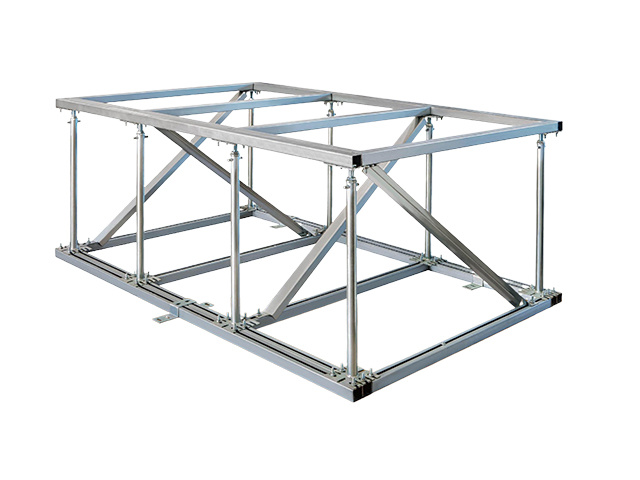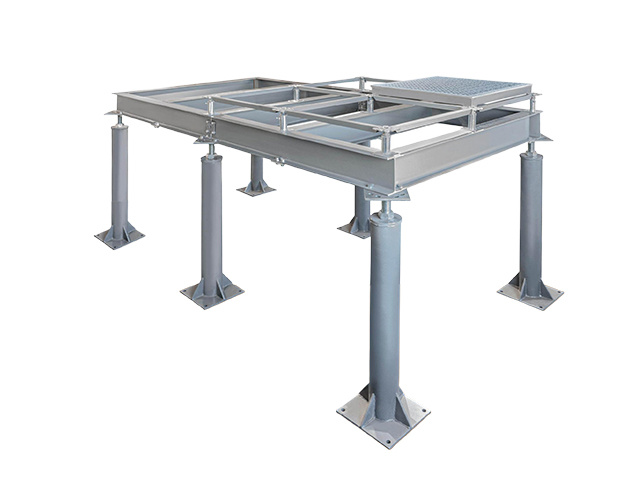Understanding Raised Access Floor Pedestals: A Comprehensive Guide
Raised access floor pedestals are integral components in modern architectural design, especially in commercial and industrial spaces. They provide a versatile flooring solution that allows for efficient management of cables and utilities while maintaining an aesthetically pleasing environment. The pedestals elevate the floor panels above the subfloor, creating a space that can accommodate electric
2025年10月01日
Raised access floor pedestals are integral components in modern architectural design, especially in commercial and industrial spaces. They provide a versatile flooring solution that allows for efficient management of cables and utilities while maintaining an aesthetically pleasing environment. The pedestals elevate the floor panels above the subfloor, creating a space that can accommodate electrical wiring, HVAC systems, and other mechanical services.
One of the primary advantages of raised access floors is their flexibility. This adaptability enables easy modifications to the infrastructure without the need for extensive renovations. Whether you are redesigning an office layout or upgrading a technical facility, raised access floor pedestals can streamline the process. They allow for quick access to the underfloor space, facilitating changes in technology or office configurations without significant downtime.
Moreover, the ability to manage airflow and temperature control is another significant benefit. The space created by raised access floors can be utilized for air distribution, helping to maintain optimal indoor climates. This is particularly useful in data centers and server rooms, where climate control is crucial for the protection of sensitive equipment.
In terms of installation, raised access floor pedestals are designed for ease of assembly. They can be installed over various substrates, including concrete, wood, or existing flooring, making them a practical choice for both new constructions and renovations. The height of the pedestals can be adjusted to meet specific project needs, allowing for customization based on room dimensions and ceiling heights.
The materials used for raised access floor pedestals also contribute to their functionality and durability. Typically made from high-strength steel or aluminum, these pedestals are engineered to support heavy loads while providing stability. Their design accommodates various floor panel types, ensuring compatibility and performance.
Furthermore, these systems promote sustainability in construction. By enabling better space utilization and reducing the need for traditional ceiling-mounted systems, they help minimize the environmental footprint of a building. This aligns with the increasing demand for green building practices, making raised access floors a forward-thinking choice for developers and designers.
In conclusion, raised access floor pedestals are a multifaceted solution that enhances functionality, flexibility, and sustainability in modern building designs. Their capacity to accommodate infrastructure needs while maintaining aesthetic appeal makes them an essential element for contemporary spaces. As the demand for adaptable environments increases, understanding the role of these pedestals becomes crucial for professionals in the architecture and construction sectors.
One of the primary advantages of raised access floors is their flexibility. This adaptability enables easy modifications to the infrastructure without the need for extensive renovations. Whether you are redesigning an office layout or upgrading a technical facility, raised access floor pedestals can streamline the process. They allow for quick access to the underfloor space, facilitating changes in technology or office configurations without significant downtime.
Moreover, the ability to manage airflow and temperature control is another significant benefit. The space created by raised access floors can be utilized for air distribution, helping to maintain optimal indoor climates. This is particularly useful in data centers and server rooms, where climate control is crucial for the protection of sensitive equipment.
In terms of installation, raised access floor pedestals are designed for ease of assembly. They can be installed over various substrates, including concrete, wood, or existing flooring, making them a practical choice for both new constructions and renovations. The height of the pedestals can be adjusted to meet specific project needs, allowing for customization based on room dimensions and ceiling heights.
The materials used for raised access floor pedestals also contribute to their functionality and durability. Typically made from high-strength steel or aluminum, these pedestals are engineered to support heavy loads while providing stability. Their design accommodates various floor panel types, ensuring compatibility and performance.
Furthermore, these systems promote sustainability in construction. By enabling better space utilization and reducing the need for traditional ceiling-mounted systems, they help minimize the environmental footprint of a building. This aligns with the increasing demand for green building practices, making raised access floors a forward-thinking choice for developers and designers.
In conclusion, raised access floor pedestals are a multifaceted solution that enhances functionality, flexibility, and sustainability in modern building designs. Their capacity to accommodate infrastructure needs while maintaining aesthetic appeal makes them an essential element for contemporary spaces. As the demand for adaptable environments increases, understanding the role of these pedestals becomes crucial for professionals in the architecture and construction sectors.



